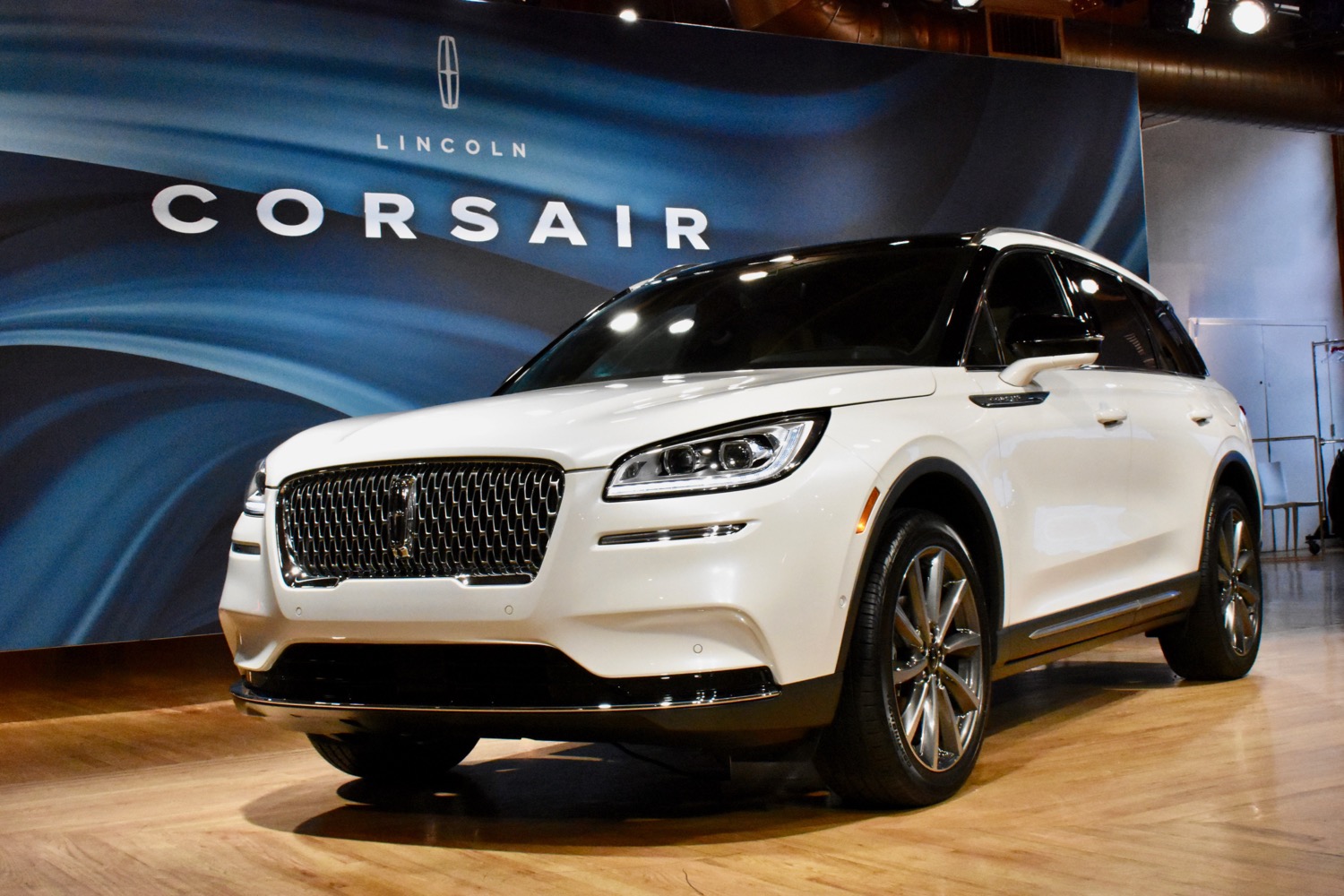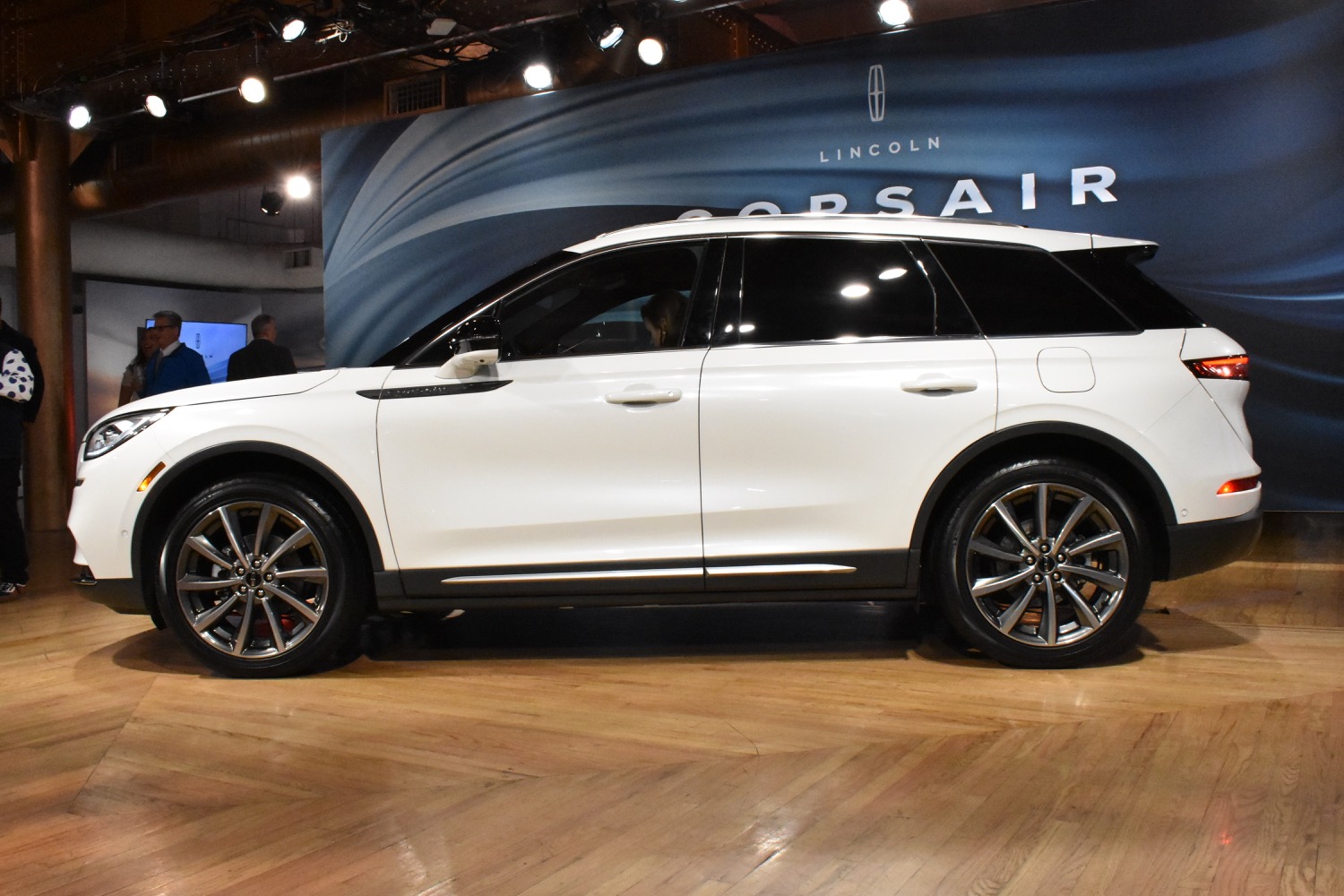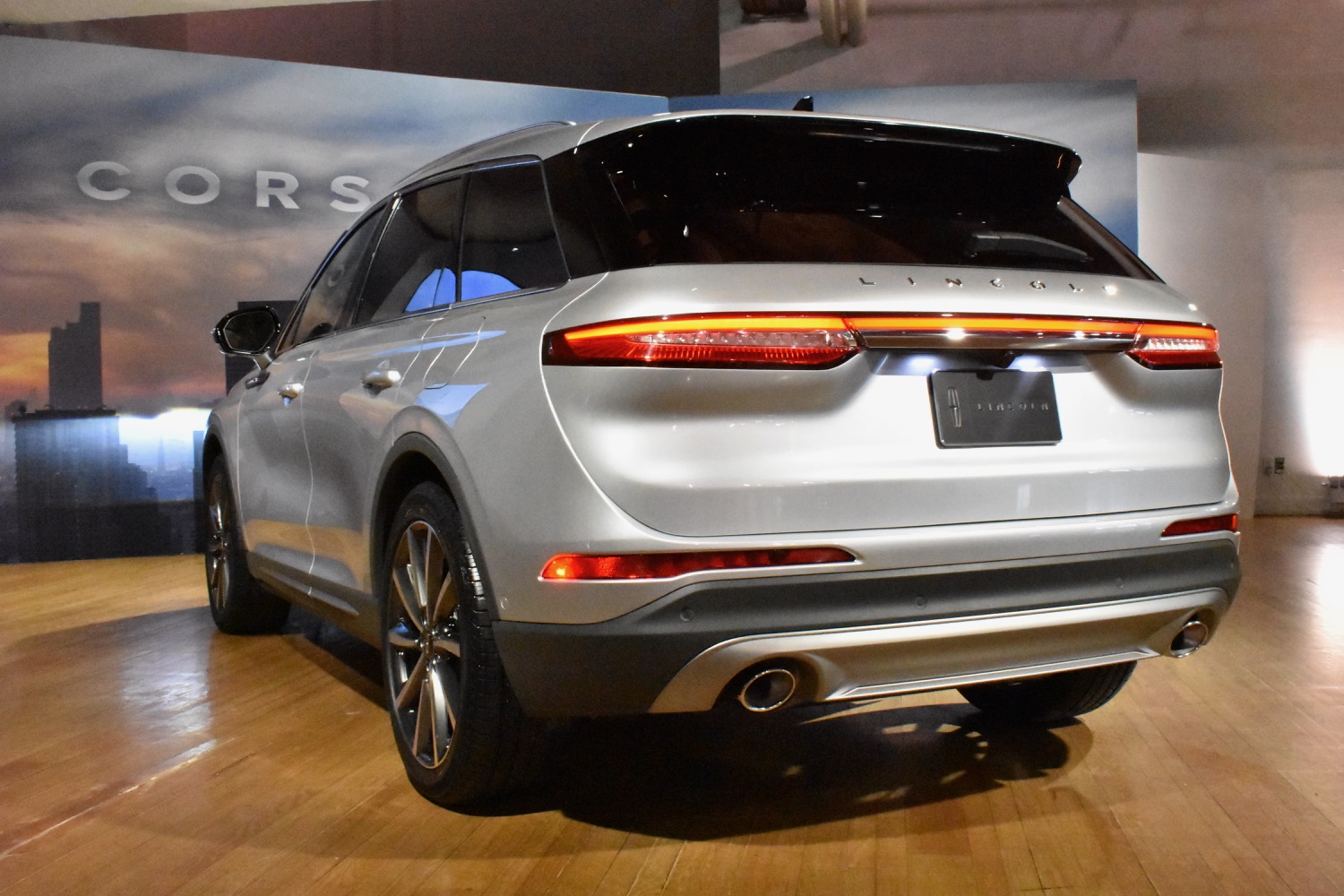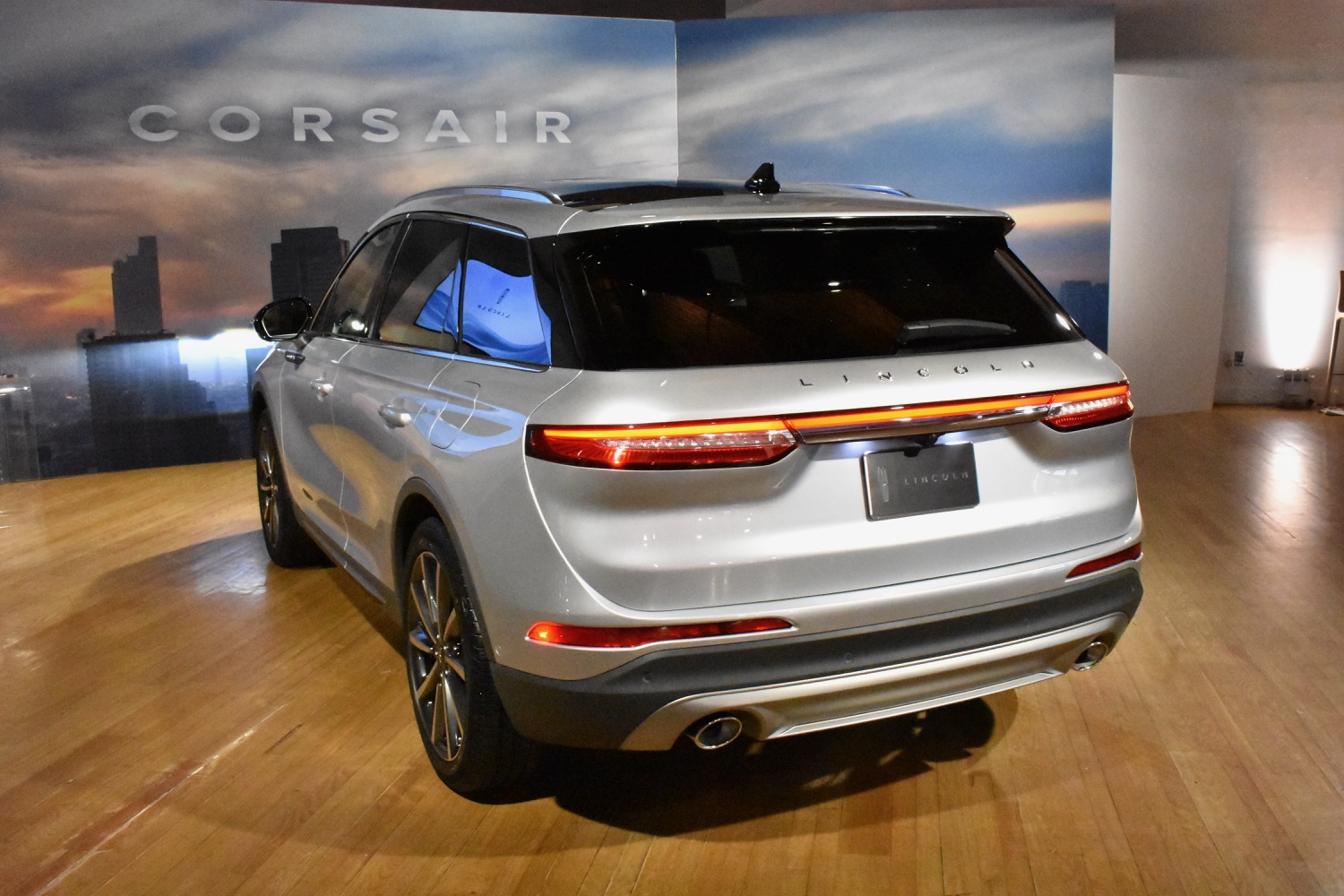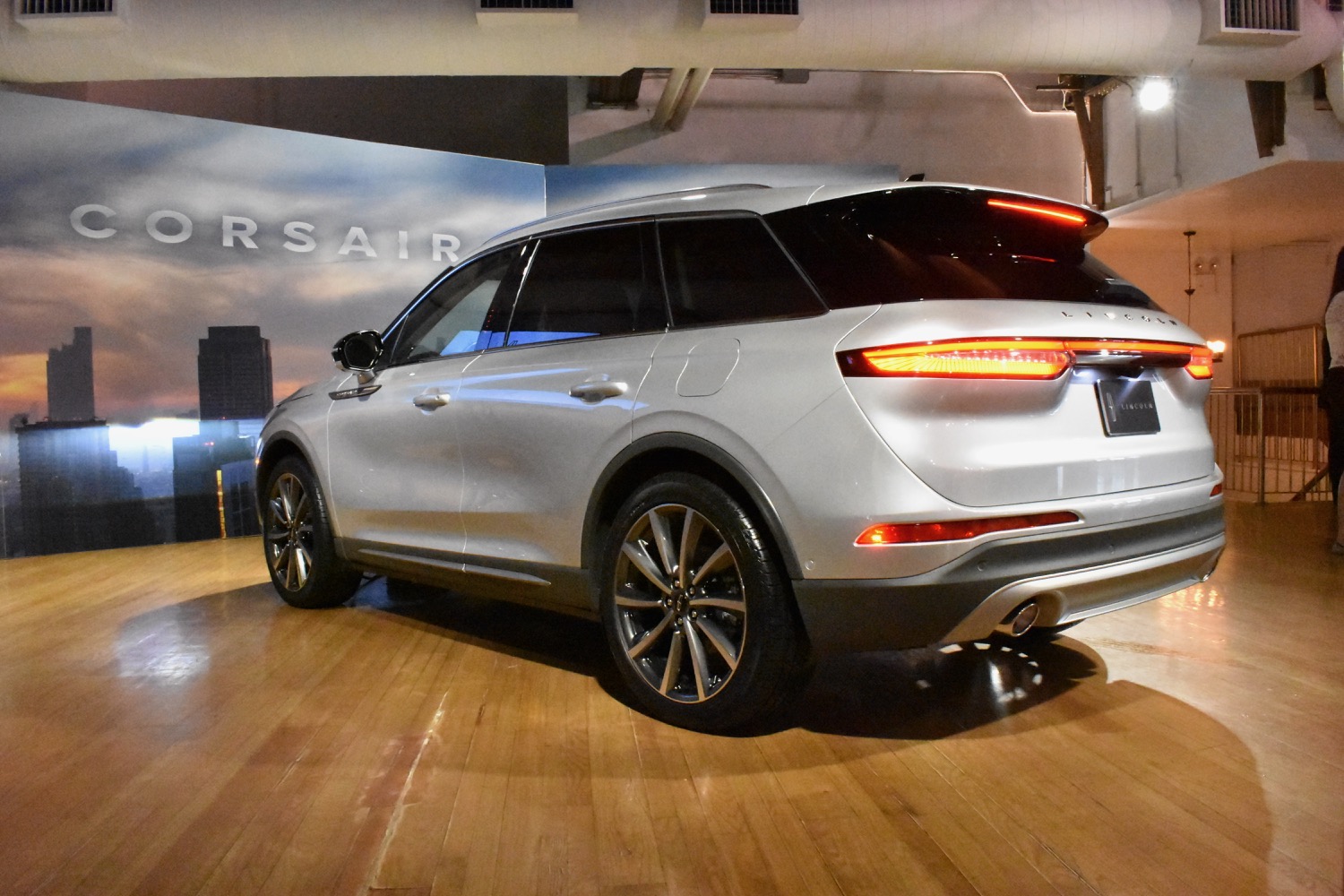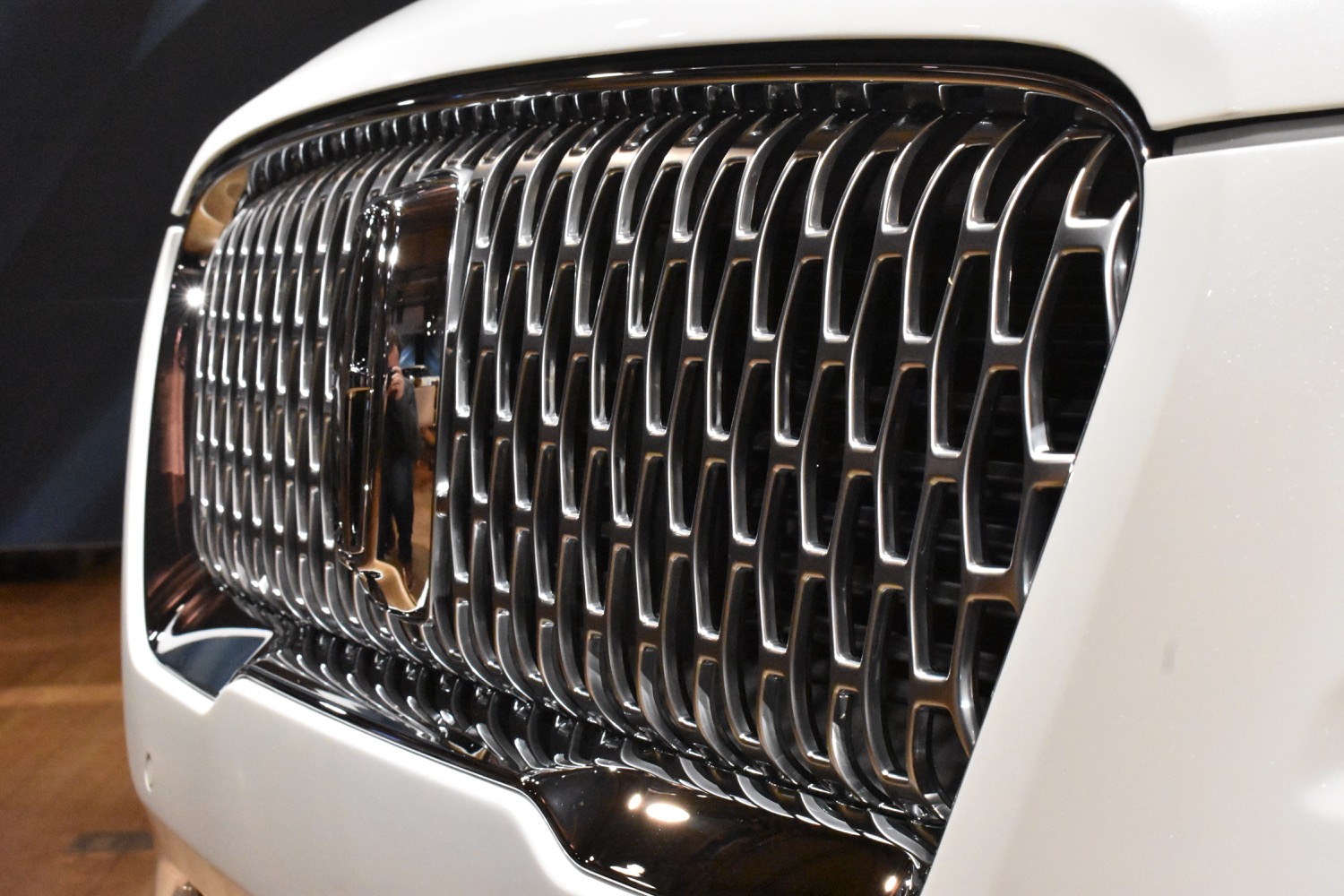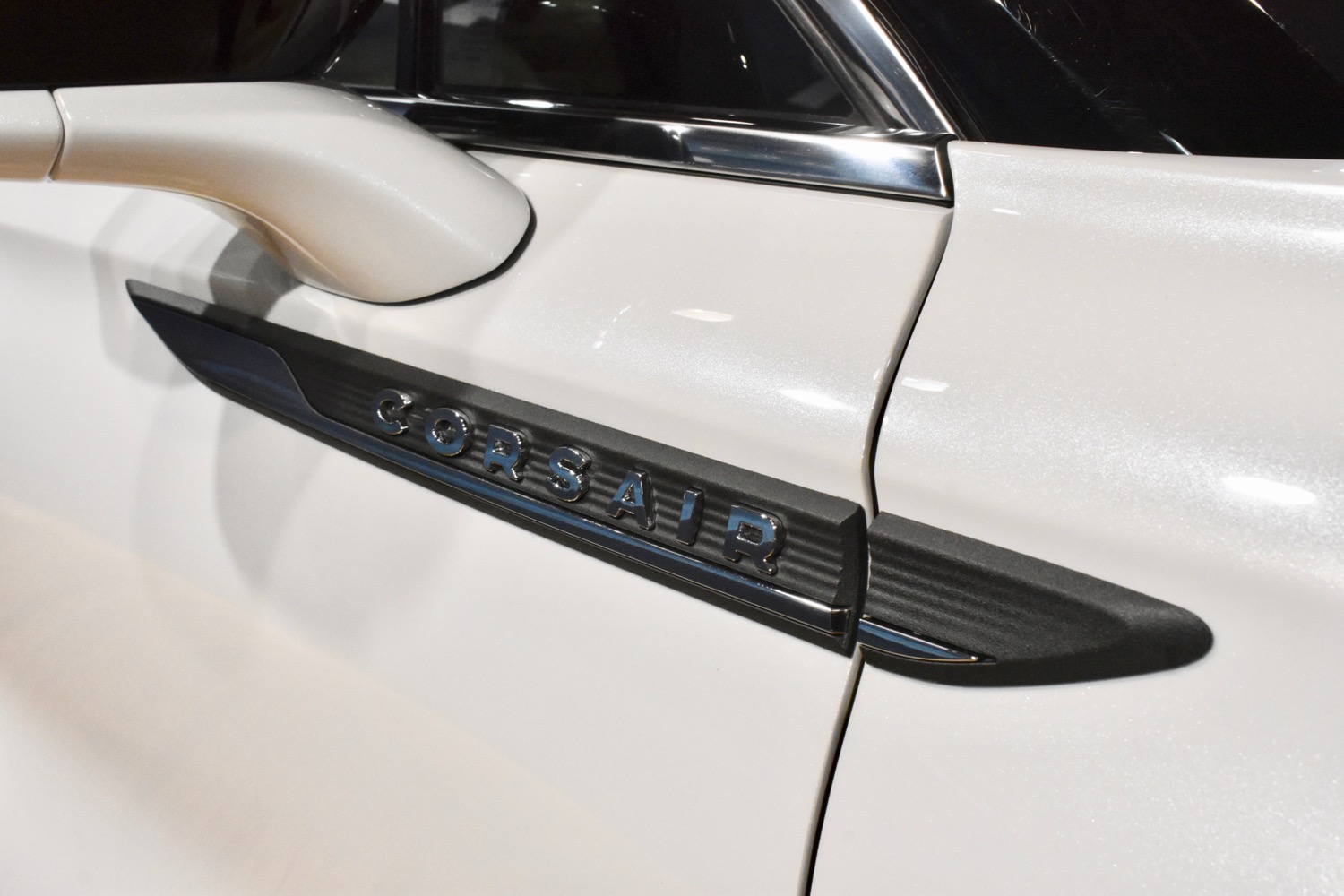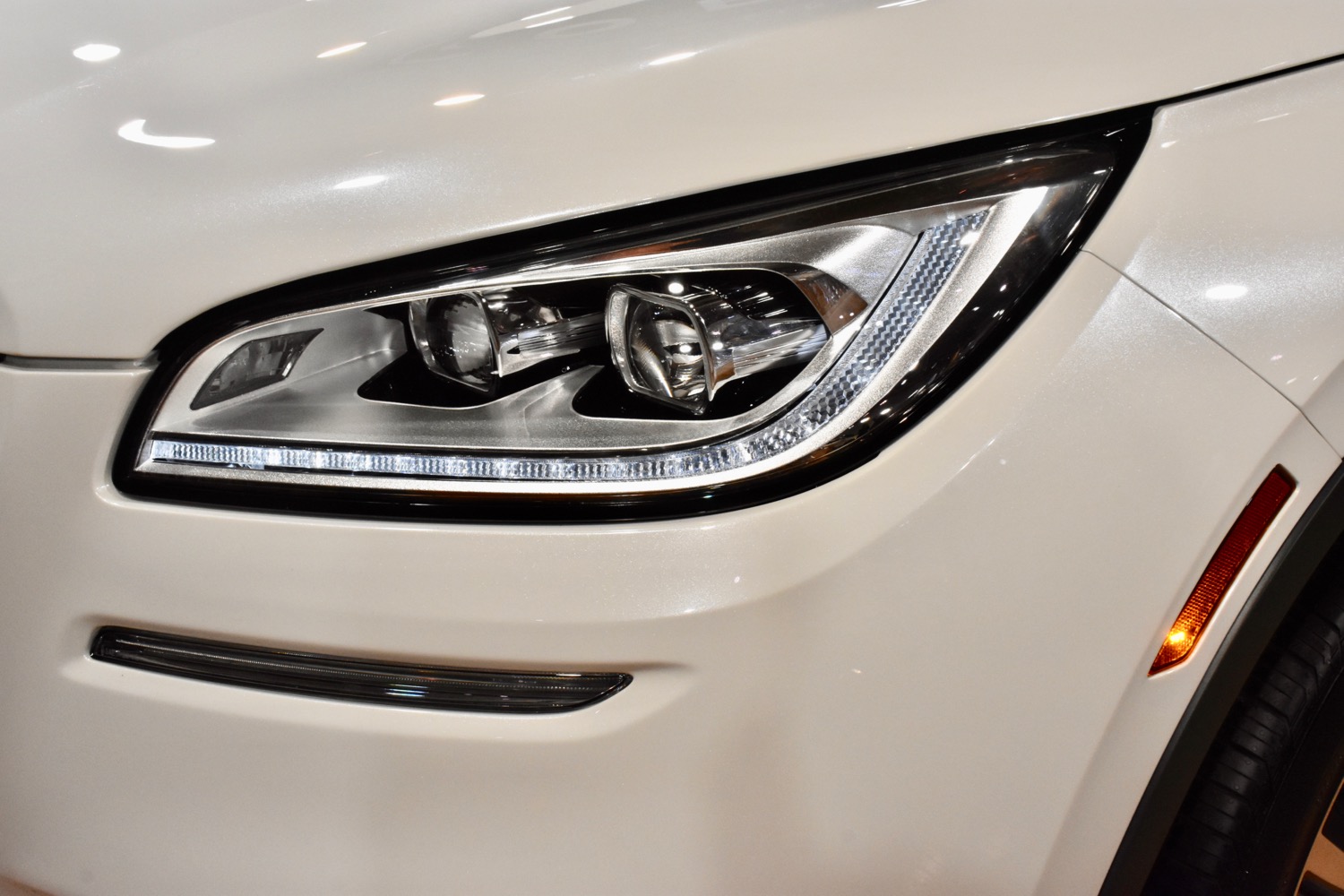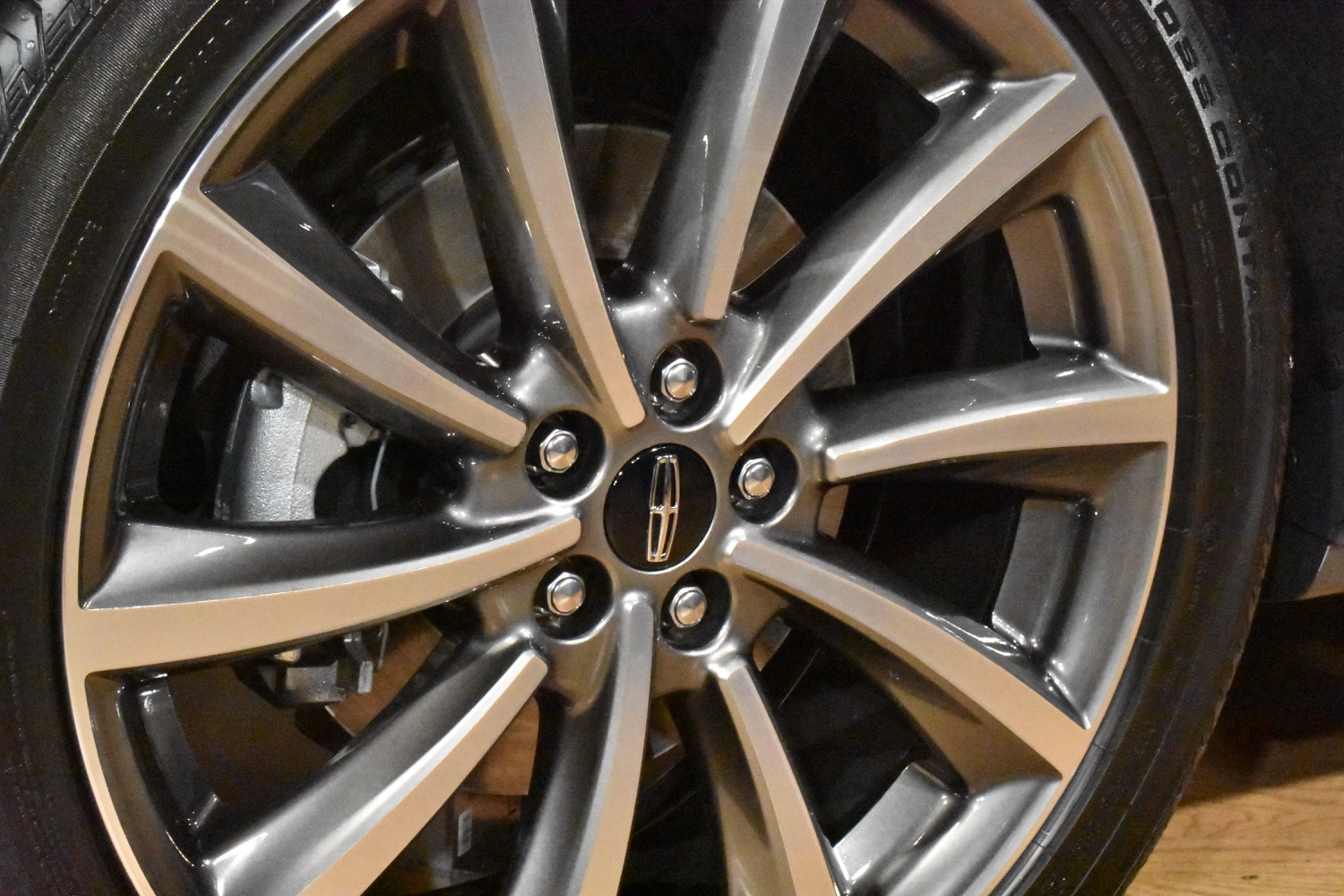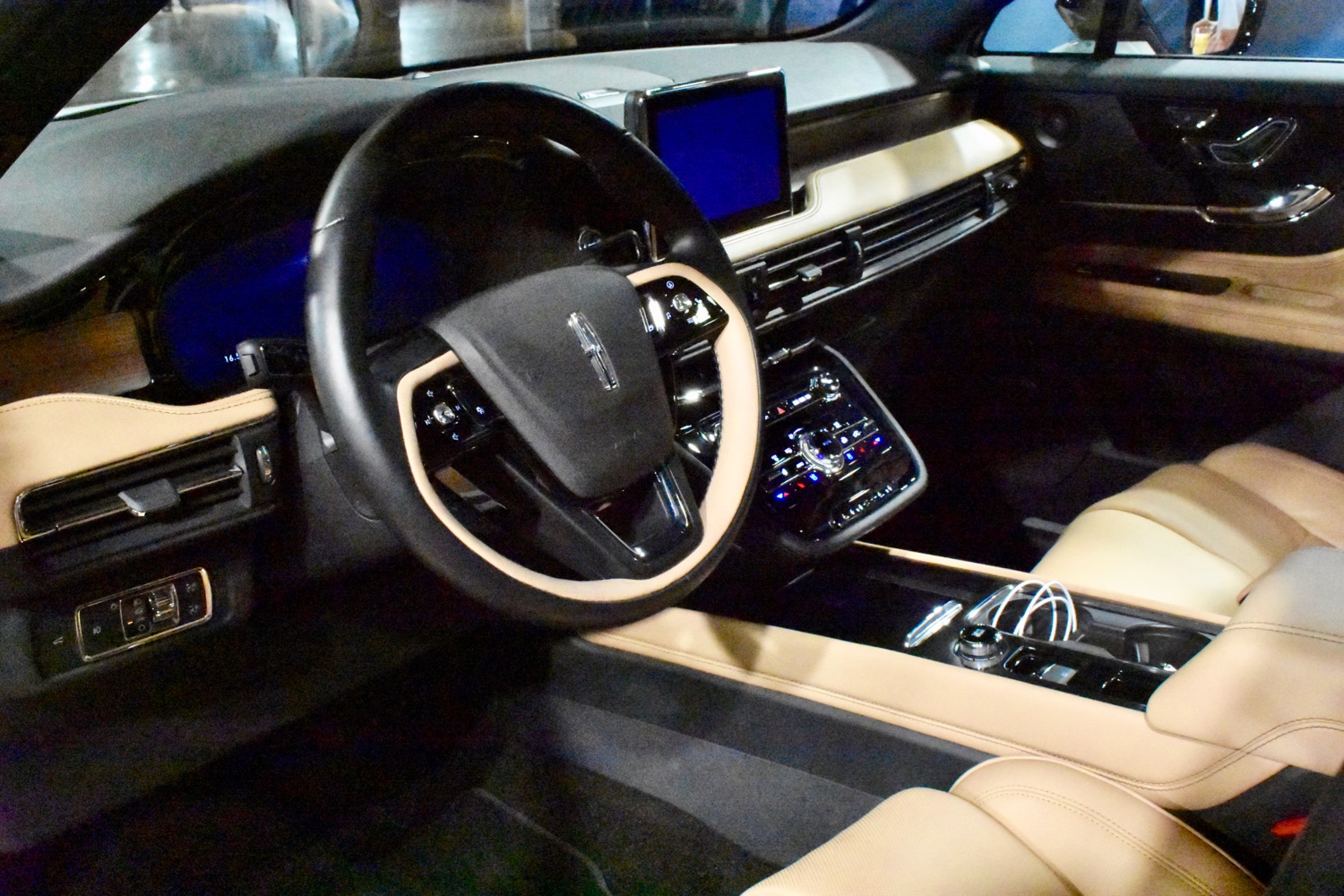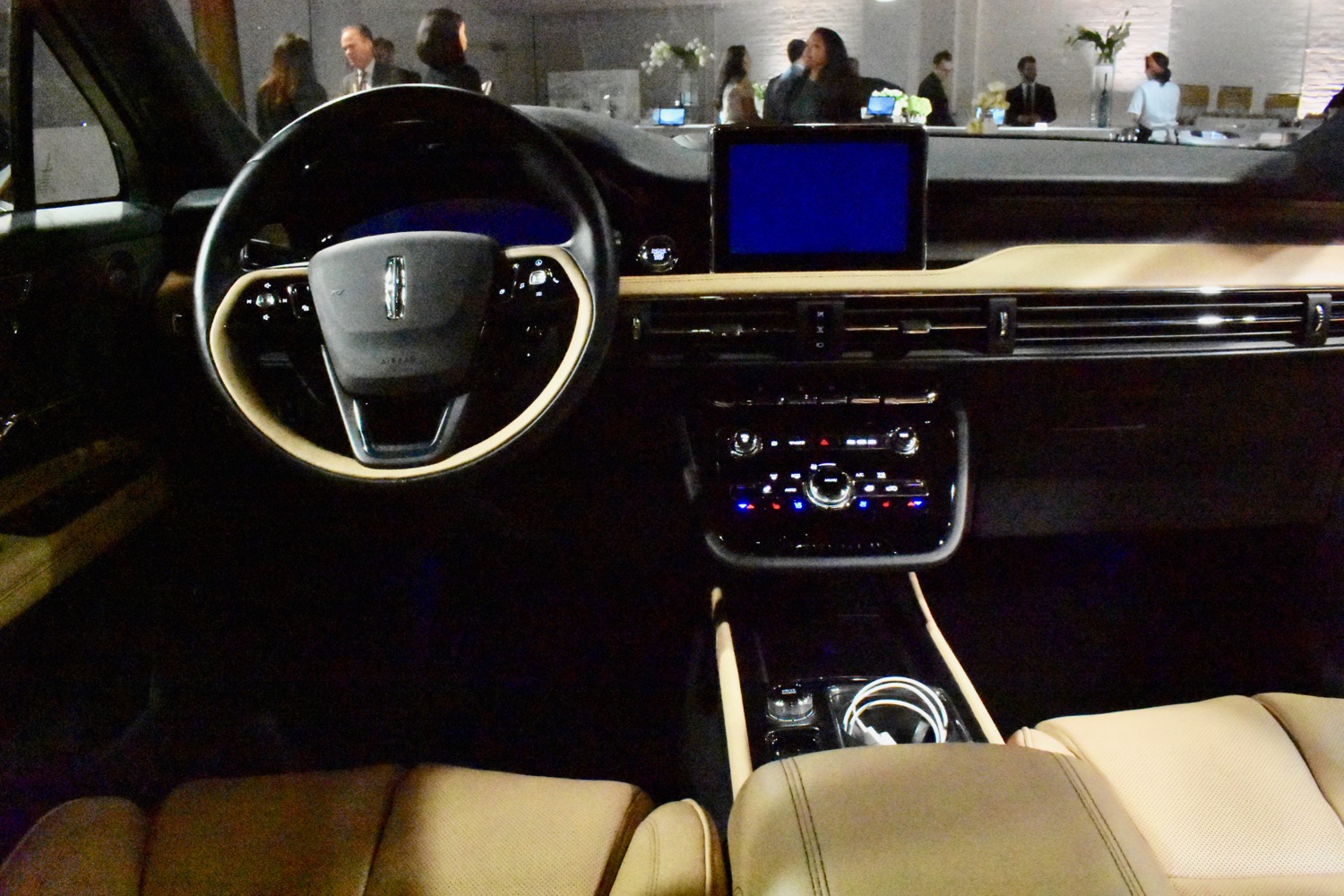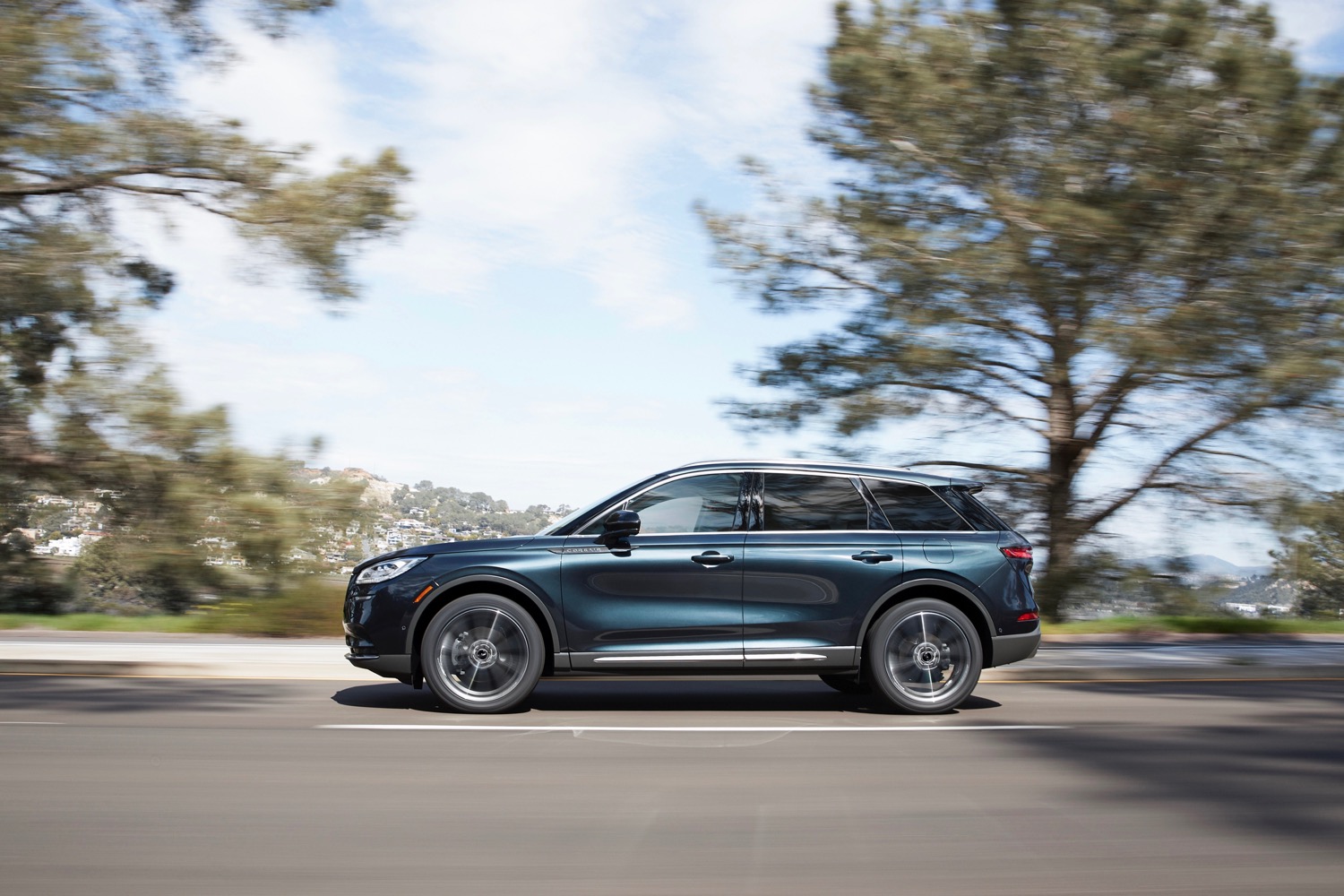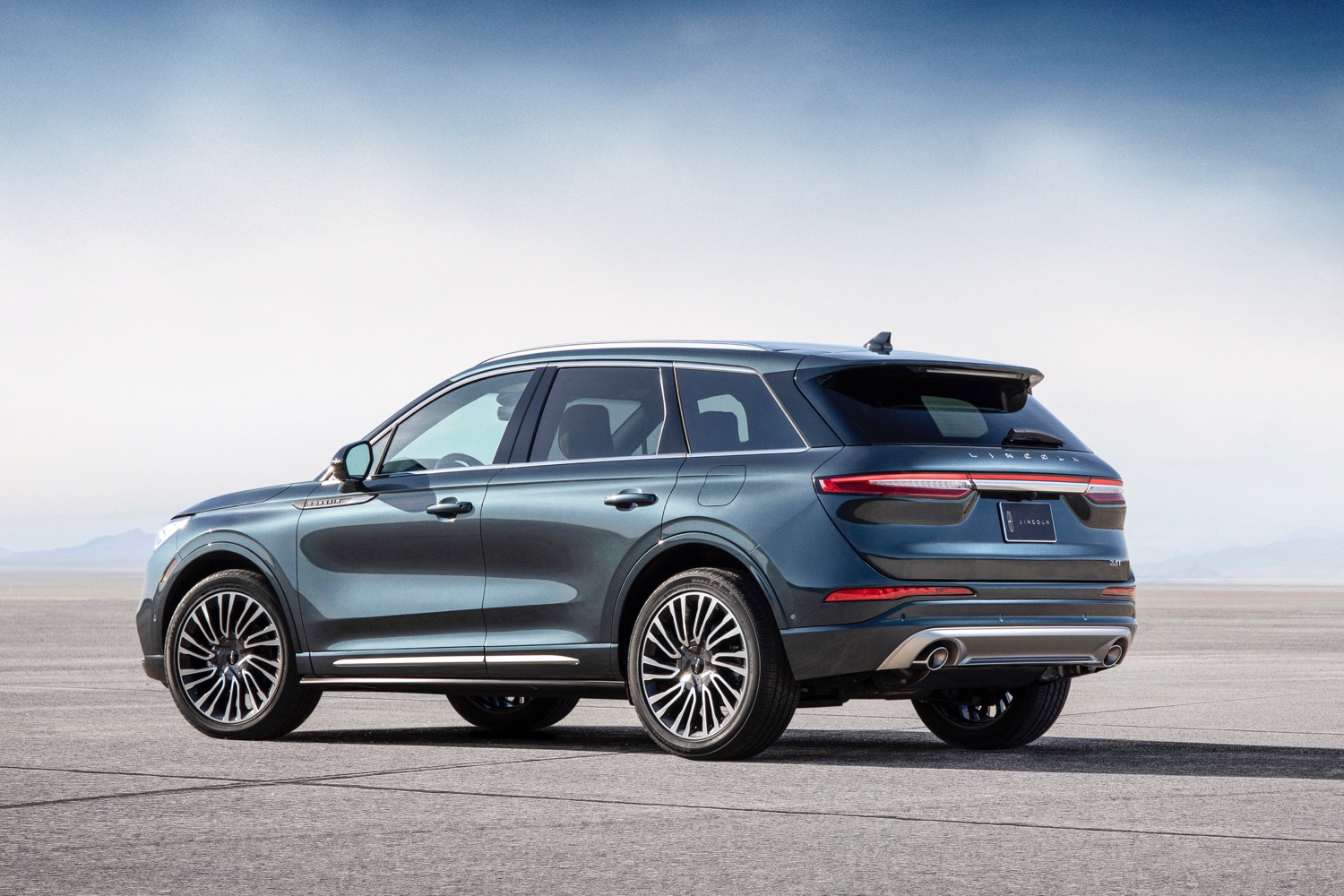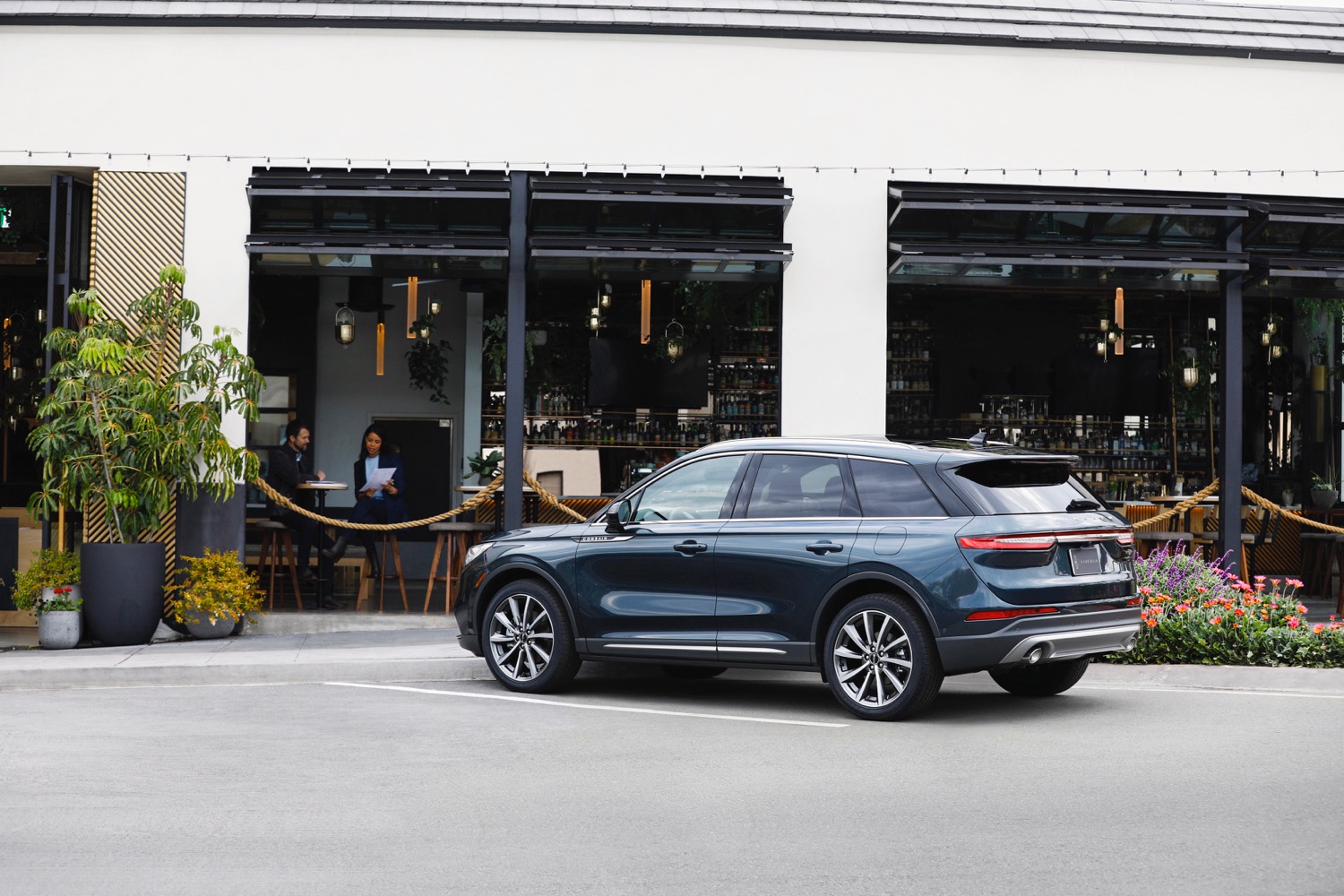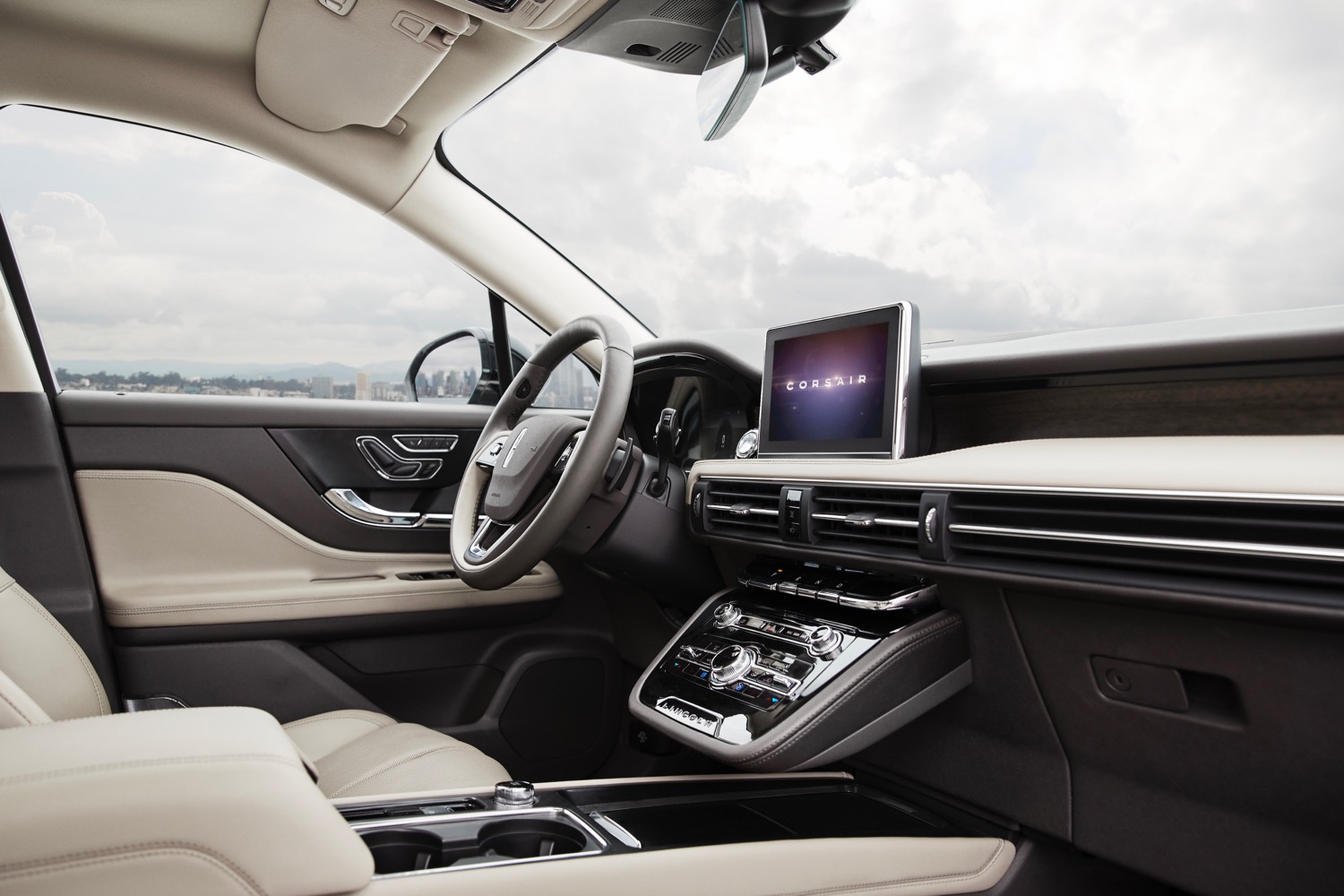In keeping with parent Ford’s plan to emphasize crossovers, SUVs, and pickup trucks over sedans and hatchbacks, Lincoln will unveil a new crossover at the 2019 New York Auto Show. The 2020 Lincoln Corsair is the smallest utility vehicle in the luxury brand’s lineup, but it borrows tech and luxury features from its larger siblings.
The Corsair shares basic underpinnings with the 2020 Ford Escape, which is also making its debut in New York. But engineers made some changes to the blue collar Blue Oval recipe — including added sound deadening and retuned suspension — to make the Corsair feel more luxurious. The chassis is wrapped in a downsized version of the exterior styling from the Nautilus, Aviator, and Navigator.
When it goes on sale later this year, the Corsair will come standard with a 2.0-liter turbocharged four-cylinder engine making 250 horsepower and 275 pound-feet of torque. A 2.3-liter turbo four-cylinder with 280 hp and 310 lb-ft will also be available. Both engines are coupled to an eight-speed automatic transmission with all-wheel drive. The all-wheel drive system defaults to front-wheel drive when extra traction is needed, Lincoln noted, in order to save fuel. A plug-in hybrid powertrain, likely borrowed from the Corsair’s Ford Escape sibling, will be added at some point after launch.
As with the 2020 Lincoln Aviator, Corsair drivers will be able to use their phones in place of a traditional key fob. Drivers can also use it to create personal profiles encompassing up to 80 features, according to Lincoln, from seat position to radio presets.
Other notable tech features include a 14-speaker Revel audio system and a head-up display that Lincoln promises will work with polarized sunglasses. The infotainment system is the familiar Sync 3 system used in every other Lincoln and most vehicles from parent company Ford. The driver gets a 24-way adjustable seat with massage, while rear-seat passengers get more legroom than in a Mercedes-Benz GLS, Lincoln boasted. Alternatively, the rear seats can slide forward 6.0 inches to accommodate more luggage.
The Corsair will likely be set apart from German and Japanese luxury crossovers by the details, though. As in the 2020 Aviator, the warning chimes were recorded by the Detroit Symphony Orchestra for maximum fanciness. Instead of an awkward electronic shifter, gears are selected using switches on the center console — a setup borrowed from Lincoln’s flagship Navigator. The Corsair also gets the same imaginative drive-mode names as the Aviator and Navigator. Instead of “sport,” you get “excite,” and instead of “eco,” you get “conserve.”
The standard Co-Pilot360 suite of driver aids includes autonomous emergency braking, blind spot monitoring, lane keep assist, and automatic high beams. The optional Co-Pilot360 Plus package adds adaptive cruise control with lane centering, reverse autonomous braking, evasive steer assist (adds steering assist to make emergency maneuvers easier) and a park-assist system that can steer the Corsair into parallel or perpendicular spaces with almost no intervention from the driver.
The 2020 Lincoln Corsair will be built in Louisville, Kentucky, and hits dealerships this fall. Pricing will be announced closer to launch.
Updated on April 17, 2019: Added full details and photos from the Corsair’s New York reveal.
Editors' Recommendations
- New York International Auto Show canceled for 2020
- Lincoln Corsair Grand Touring adds plug-in hybrid power
- Pint-sized 2021 Kia Seltos crossover could be a great tech value
- Lexus did the obvious thing and chopped the top off its flagship LC
- Acura adds some supercar touches to its MDX family crossover
